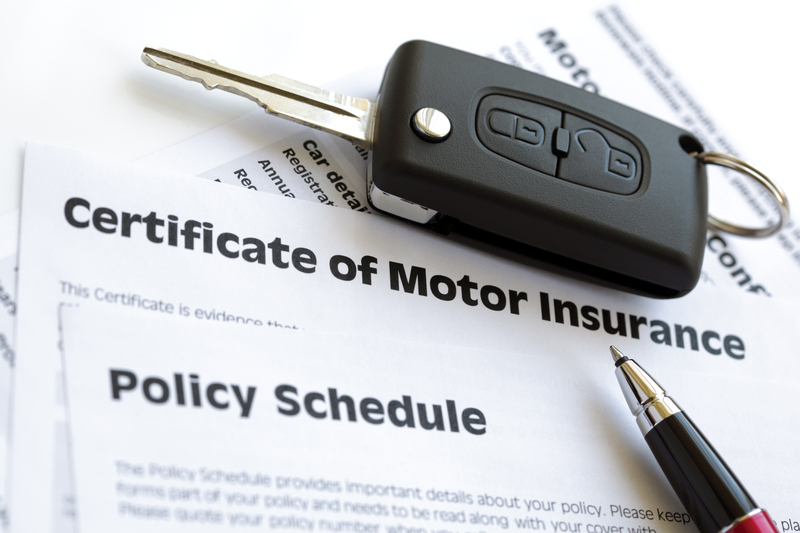Expert Advice on Moving Your Bed and Mattress with Ease
Posted on 05/06/2025
Expert Advice on Moving Your Bed and Mattress with Ease
Moving can feel overwhelming, but when it comes to transferring your bed and mattress, a few expert tips can make a world of difference. Whether you're moving across town or across the country, ensuring that these essential pieces arrive undamaged is crucial for a good night's sleep in your new home. In this comprehensive guide, we'll show you step-by-step how to move your bed and mattress with ease, protect your investment, and simplify your entire relocation process.

Why Good Preparation Matters When Moving Your Bed and Mattress
Beds and mattresses are substantial investments and central pieces in every bedroom. Beds often have intricately assembled frames, and mattresses are not only bulky but also easily damaged if not handled properly. Proper preparation helps avoid common mishaps such as:
- Sustaining rips, tears, or stains.
- Damaging bed frames and hardware.
- Injury from improper lifting techniques.
- Wasting time reassembling the bed incorrectly.
Taking the time to follow expert advice ensures a smooth, stress-free move and can even prolong the lifespan of your mattress and bed.
Step-by-Step Guide: How to Move Your Mattress and Bed Frame Easily
1. Gather the Right Tools and Supplies
- Sturdy mattress bags or protectors
- Moving blankets and bubble wrap
- Strong packing tape
- Disassembly tools (screwdrivers, Allen keys, etc.)
- Plastic bags for hardware
- Straps or ropes for securing items in the moving truck
- Furniture dolly (especially for heavy bed frames)
- Markers and labels
Having these supplies on hand before you begin will make the process smoother and protect your furniture during transit.
2. Strip the Bedding and Clean Your Mattress
- Remove all pillows, sheets, and comforters.
- Check the mattress and bed for stains or damage.
- Give the mattress a quick vacuum and air it out if possible.
Starting with a clean bed and mattress ensures you won't be bringing dust or allergens into your new home.
3. Disassemble the Bed Frame Carefully
- Refer to the manufacturer's instructions for proper disassembly.
- Take photos during each stage; these will help you assemble the bed later.
- Place all screws, bolts, and small hardware into labeled plastic bags.
- Bundle slats and support beams carefully and protect sharp corners with padding.
Don't rush this step! Properly disassembling your bed frame prevents damage and makes reassembly at your new location much more manageable.
4. Protect and Package the Mattress
- Slide your mattress into a high-quality mattress bag or encasement.
- For long-distance moves or poor weather, double-bag for added protection.
- Seal the bag with tape and make sure there are no tears or open seams.
- For memory foam or hybrid mattresses, keep them flat to avoid damage.
Never fold or force your mattress through narrow spaces unless the manufacturer specifically states it is safe to do so.
5. Carefully Move the Bed Frame
- If possible, move larger bed frame components with a friend.
- Use a furniture dolly for transporting heavy wood or metal frames.
- Wrap each piece in moving blankets to prevent scratches and dents.
Secure the bed frame in the moving truck using straps to prevent shifting during transport.
6. Transport the Mattress Properly
- Keep the mattress upright if space is tight, but lay it flat for extended travel to prevent sagging.
- Never stack heavy boxes on top of the mattress.
- Secure with tie-downs or straps inside the moving vehicle.
If moving in wet or snowy conditions, double-check the mattress bag for leaks and use tarps as necessary.
7. Reassemble with Care in Your New Home
- Refer to the photos you took during disassembly.
- Lay out all pieces and hardware before starting.
- Ask for help lifting and aligning the heavier components.
- Test the frame for stability before placing your mattress on top.
Take your time to get things right--your back and your sleep quality will thank you.
Expert Tips for an Effortless Bed and Mattress Move
Professional movers swear by a few tricks for making this process not just smoother, but safer for your furniture and your health. Here's a collection of their top tips:
- Measure Doorways and Hallways Ahead of Time: Don't get stuck--measure pathways in both your old and new homes to ensure your bed and mattress fit easily. Remove doors from hinges if needed.
- Protect Your Mattress Like a Professional: Quality mattress bags aren't expensive but can save your mattress from dirt, dust, and water damage during any move.
- Label Everything: Use painter's tape and a marker to label bed frame components; this eliminates confusion during reassembly.
- Ask for Help with Lifting: Mattresses, especially king- and queen-sized, are heavy and unwieldy. Avoid injury by recruiting an extra pair of hands.
- Use Sliders on Hardwood or Carpet: Furniture sliders make it easy to trickily move heavy pieces without damaging floors.
- Keep Hardware Attached: Use tape to attach labeled hardware bags to the bed frame pieces they belong to; this makes the reassembly process swift and organized.
Common Mistakes to Avoid When Moving Your Bed and Mattress
Even seasoned movers can make errors. Here are frequent missteps and how to avoid them:
- Skipping the Mattress Bag: This exposes your mattress to moisture, dust, and possible pests. Always use a protector.
- Attempting to Move Alone: Both beds and mattresses require at least two people for safe, efficient moving.
- Neglecting to Disassemble Properly: Forcing large frames through doorways without full disassembly risks damaging both the bed and your home.
- Stacking Heavy Objects on the Mattress: This can permanently damage the internal structure, especially memory foam and hybrid types.
- Not Labeling Hardware or Frame Parts: Always label to prevent frustrating delays during setup in your new home.
Should You Hire Professional Movers for Your Bed and Mattress?
If the process seems daunting, hiring professional movers may be your best option. Experts come prepared with the right equipment, packing materials, and knowledge to move beds and mattresses safely and efficiently. The advantages include:
- Reduced risk of injury.
- Protection for your investment.
- Faster, more organized moves.
- Insurance in case of accident or damage.
While it represents an added expense, the peace of mind and time saved can be invaluable, especially with luxury or oversized beds and mattresses.
Special Considerations: Moving Different Types of Mattresses
Innerspring Mattresses
- Generally strong and durable, but still require protection from sharp objects.
- Move flat whenever possible to maintain the integrity of the springs.
Memory Foam and Latex Mattresses
- These are heavier and more flexible; avoid bending or folding.
- Keep them flat during transport and use two people for lifting.
Hybrid Mattresses
- Combine coils and foam layers--double-protect to avoid collapse or tearing.
- Transport flat and avoid stacking items on top.
Adjustable Bed Frames
- Often require special disassembly. Consult the manufacturer.
- Secure wiring and electronic components separately.
How to Safely Store Your Mattress During a Move
If your move involves storage, ensuring optimal conditions is a must. Here's what the experts recommend:
- Use a Climate-Controlled Storage Unit: Prevent mold and moisture damage by storing in regulated environments.
- Keep the Mattress Flat: Avoid upright storage for long periods, which can warp the structure.
- Never Store with Heavy Items on Top: This safeguards the mattress shape and comfort layers.
- Double-Bag for Extra Protection: Storage environments carry extra risks, so reinforce your packaging.

Reassembling and Setting Up for Comfort in Your New Home
Once you arrive at your new location, setting up your bed and mattress correctly is vital for comfort and support. Follow these steps:
- Unpack and inspect the mattress before placing on the frame.
- Assemble the bed frame as per your earlier photos and labels.
- Ensure all bolts and connections are tight and secure.
- Allow the mattress to air out before dressing with clean linens.
If your mattress was stored or packed for a prolonged period, allow it to fully expand by leaving it flat and uncovered for several hours before use.
Conclusion: Move Your Bed and Mattress with Confidence
Moving your bed and mattress doesn't have to be a stressful ordeal. With the right preparation, tools, and strategies, you can move your bed and mattress with ease--protecting your investment, your back, and your peace of mind. Whether you're handling the move yourself or enlisting professional help, planning ahead and following expert advice ensures your first night in your new home is comfortable and restful.
Ready for your next move? Use these expert moving tips to make your bed and mattress relocation smooth and trouble-free, and enjoy sweet dreams in your new space.



